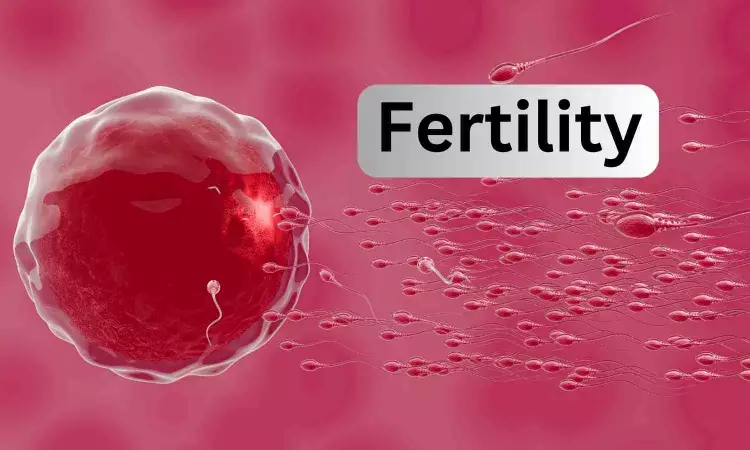- Home
- Medical news & Guidelines
- Anesthesiology
- Cardiology and CTVS
- Critical Care
- Dentistry
- Dermatology
- Diabetes and Endocrinology
- ENT
- Gastroenterology
- Medicine
- Nephrology
- Neurology
- Obstretics-Gynaecology
- Oncology
- Ophthalmology
- Orthopaedics
- Pediatrics-Neonatology
- Psychiatry
- Pulmonology
- Radiology
- Surgery
- Urology
- Laboratory Medicine
- Diet
- Nursing
- Paramedical
- Physiotherapy
- Health news
- Fact Check
- Bone Health Fact Check
- Brain Health Fact Check
- Cancer Related Fact Check
- Child Care Fact Check
- Dental and oral health fact check
- Diabetes and metabolic health fact check
- Diet and Nutrition Fact Check
- Eye and ENT Care Fact Check
- Fitness fact check
- Gut health fact check
- Heart health fact check
- Kidney health fact check
- Medical education fact check
- Men's health fact check
- Respiratory fact check
- Skin and hair care fact check
- Vaccine and Immunization fact check
- Women's health fact check
- AYUSH
- State News
- Andaman and Nicobar Islands
- Andhra Pradesh
- Arunachal Pradesh
- Assam
- Bihar
- Chandigarh
- Chattisgarh
- Dadra and Nagar Haveli
- Daman and Diu
- Delhi
- Goa
- Gujarat
- Haryana
- Himachal Pradesh
- Jammu & Kashmir
- Jharkhand
- Karnataka
- Kerala
- Ladakh
- Lakshadweep
- Madhya Pradesh
- Maharashtra
- Manipur
- Meghalaya
- Mizoram
- Nagaland
- Odisha
- Puducherry
- Punjab
- Rajasthan
- Sikkim
- Tamil Nadu
- Telangana
- Tripura
- Uttar Pradesh
- Uttrakhand
- West Bengal
- Medical Education
- Industry
Exposure to UV radiations of sun may have positive effect on fertility in women aged 30-40

A research team from Tel Aviv University and the Sheba Medical Center at Tel Hashomer conducted investigation of seasonal fluctuations in AMH (anti-Müllerian hormone) levels. Their pioneering study revealed that during the summer, women of late reproductive age-between the ages of 30 and 40-experience increased secretion of the hormone from their ovaries. This phenomenon is suggested to be attributed to heightened exposure to ultraviolet (UV) radiation from the sun. The groundbreaking research was led by Prof. Carmit Levy of the Department of Human Genetics and Biochemistry, in a team effort of Ph.D. student Roma Parikh and Prof. Yftach Gepner of the School of Public Health, all from the Faculty of Medicineat Tel Aviv University and Dr. Ruth Percik from the Institute of Endocrinology at Sheba Medical Center. The results of the study were published in the journal Steroids.
“The ovaries secrete the anti-Müllerian hormone, and its level in the bloodstream is linked to ovarian function,” explains Dr. Percik. “While the hormone level is specific to an individual woman at a given point in time and does not provide a definitive assessment of the status of her fertility, evaluating its value, trend, and comparison to the age group is the best indicator of fertility that we have. For this reason, every woman who wants to get pregnant, or is trying to, is sent for an AMH test. In Israel, all of these tests are directed to the central laboratory in Sheba. Our research group investigated the seasonal variability of the AMH tests in order to gauge how the ovaries respond to UV radiation.”
The researchers compared the AMH results of 2,235 Israeli women to the recorded levels of UV radiation. For younger women, aged 20-29, no statistical relationship was found between UV exposure and AMH level. On the other hand, among older fertile women, aged 30 to 40, a statistically significant seasonal pattern emerged: These women, whose egg reserves are in decline, responded positively to sun exposure.
“Based on our prior studies, we can affirm that sun exposure increases metabolism, sexual appetite and behavior, and, at least in animal models, enlarges the ovaries and extends the estrus period,” explains Prof. Levy. “This is a preliminary, pioneering human epidemiological study, and we need to be cautious about inferring a causal relationship between fertility in women and exposure to UV radiation. Humans are not the same as mice. However, we are also animals, our hairless nature makes us even more sensitive to solar radiation. Our research suggests that the female reproductive system is indeed more fertile in the summer, but we still have no information on the mechanism or actual success rates.”
Particularly interesting is the absence of this effect among younger women in their 20s. According to Dr. Percik, this may be attributed to the ample egg reserve found in young women. “Based on my interpretation of the findings, women at the onset of their reproductive age are less in need of signals from the sun, which affect hormonal pathways that have not yet been sufficiently studied. They are less impacted or dependent on the forces of nature in the context of fertility. In contrast, older ovaries need optimal environmental factors in order to function. In fact, this effect was even more pronounced among women aged 35 and older. Of course, there are caveats: Exposure to the sun's UV radiation should always be done in moderation, and further research is required in order to determine whether such exposure actually helps fertility, and how much exposure is needed.”
Reference:
Roma Parikh, Shivang Parikh, Rina Hemi, Nadav Elkoshi, Yftach Gepner, Carmit Levy, Ruth Percik, Seasonal AMH variability implies a positive effect of UV exposure on the deterioration of ovarian follicles, Steroids, https://doi.org/10.1016/j.steroids.2023.109307.
Dr Kamal Kant Kohli-MBBS, DTCD- a chest specialist with more than 30 years of practice and a flair for writing clinical articles, Dr Kamal Kant Kohli joined Medical Dialogues as a Chief Editor of Medical News. Besides writing articles, as an editor, he proofreads and verifies all the medical content published on Medical Dialogues including those coming from journals, studies,medical conferences,guidelines etc. Email: drkohli@medicaldialogues.in. Contact no. 011-43720751


